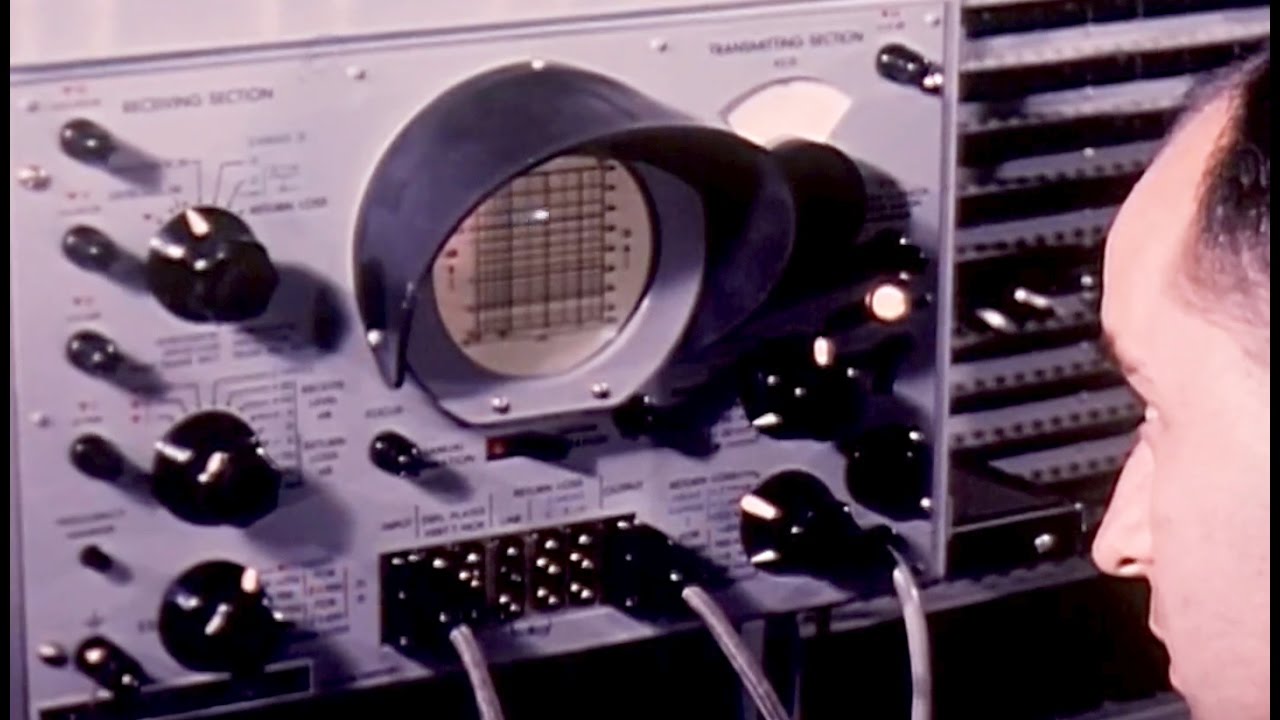Telephones & Telephony playlist:
Miscellaneous Technology playlist:
Physics & Physical Sciences playlist:
more at
The script seems rather scatterbrained at the opening, but this film has some excellent visuals, beginning about five minutes in.
Reupload of a previously uploaded film with improved video & sound.
Public domain film from the Library of Congress Prelinger Archives, slightly cropped to remove uneven edges, with the aspect ratio corrected, and one-pass brightness-contrast-color correction & mild video noise reduction applied.
The soundtrack was also processed with volume normalization, noise reduction, clipping reduction, and/or equalization (the resulting sound, though not perfect, is far less noisy than the original).
The electromagnetic spectrum is the range of all possible frequencies of electromagnetic radiation. The “electromagnetic spectrum” of an object has a different meaning, and is instead the characteristic distribution of electromagnetic radiation emitted or absorbed by that particular object.
The electromagnetic spectrum extends from below the low frequencies used for modern radio communication to gamma radiation at the short-wavelength (high-frequency) end, thereby covering wavelengths from thousands of kilometers down to a fraction of the size of an atom. The limit for long wavelengths is the size of the universe itself, while it is thought that the short wavelength limit is in the vicinity of the Planck length, although in principle the spectrum is infinite and continuous.
Nearly all parts of the electromagnetic spectrum are used in science for spectroscopic and other probing interactions, as ways to study and characterize matter.. In addition, radiation from various parts of the spectrum has found many other uses for communications and manufacturing (see electromagnetic radiation for more applications)…
The first discovery of electromagnetic waves other than light came in 1800, when William Herschel discovered infrared light. He was studying the temperature of different colors by moving a thermometer through light split by a prism. He noticed that the hottest temperature was beyond red. He theorized that there was ‘light’ that you could not see. The next year, Johann Ritter worked at the other end of the spectrum and noticed that there were ‘chemical rays’ (rays that induced certain chemical reactions) that behaved similar to, but were beyond, visible violet light rays. They were later renamed ultraviolet radiation.
Electromagnetic radiation had been first linked to electromagnetism in 1845, when Michael Faraday noticed that the polarization of light traveling through a transparent material responded to a magnetic field (see Faraday effect). During the 1860s James Maxwell developed four partial differential equations for the electromagnetic field. Two of these equations predicted the possibility of, and behavior of, waves in the field. Analyzing the speed of these theoretical waves, Maxwell realized that they must travel at a speed that was about the known speed of light.
Maxwell’s equations predicted many frequencies of electromagnetic waves traveling at the speed of light. Attempting to prove Maxwell’s equations, in 1886 Heinrich Hertz built an apparatus to generate and detect what we now call radio waves. He was able to observe that they traveled at the speed of light and could be both reflected and refracted. In a later experiment he similarly produced and measured microwaves. These new waves paved the way for inventions such as the wireless telegraph and the radio.
In 1895 Wilhelm Röntgen noticed a new type of radiation emitted during an experiment. He called these x-rays and found they were able to travel through parts of the human body but were reflected or stopped by denser matter such as bones. Before long, many uses were found for them in the field of medicine.
The last portion of the electromagnetic spectrum was filled in with the discovery of gamma rays. In 1900 Paul Villard was studying radioactivity from radium. He found a new type of radiation that he first thought consisted of particles similar to alpha and beta particles, but far more penetrating. However, in 1910 British physicist William Henry Bragg demonstrated that gamma rays are electromagnetic radiation, not particles, and in 1914, Ernest Rutherford (who had named them gamma rays) and Edward Andrade measured their wavelengths, and found that they were similar to X-rays but with shorter wavelengths and higher frequency, and thus more energy per photon…

